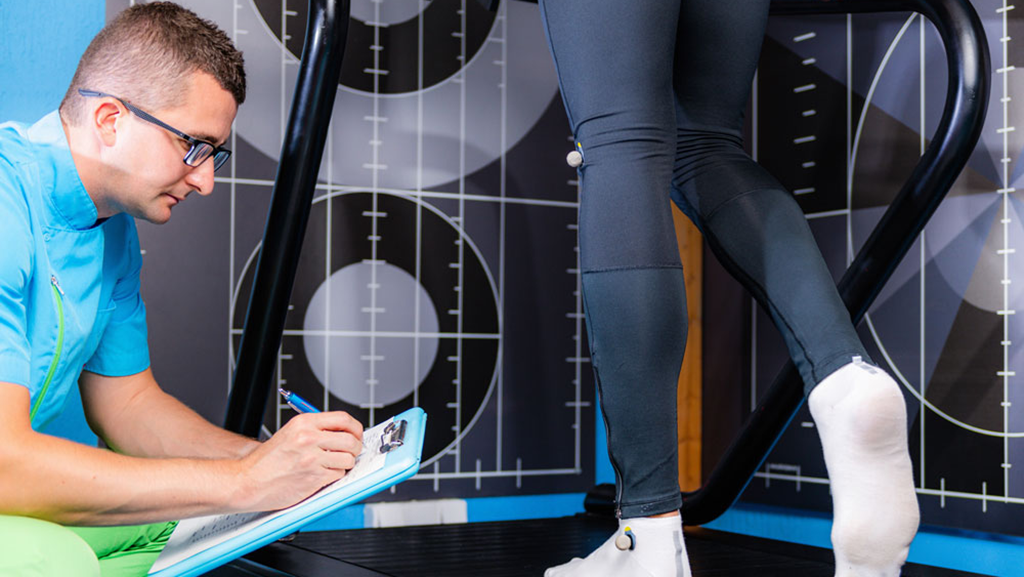FRAXA-funded research published in the Journal of Intellectual Disability Research highlights an overlooked but clinically important feature of Fragile X syndrome: how the condition affects the way kids walk and use their muscles.

We often think of Fragile X syndrome (FXS) as a brain-based disorder, affecting learning, behavior, and social interaction. But research supported by FRAXA Research Foundation is painting a broader picture that includes the body’s motor system, too.
In a recent paper published in the Journal of Intellectual Disability Research, researchers from the University of Padua show that children with Fragile X display a distinct shift in how their muscles are used during walking. Instead of relying on slow-twitch muscle fibers, which are built for endurance and stability, these children recruit fast-twitch fibers more heavily. The study, titled Children With Fragile X Syndrome Display a Switch Towards Fast Fibres in Their Recruitment Strategy During Gait, suggests this muscle pattern may contribute to the fatigue and exercise intolerance commonly seen in individuals with FXS.
This work was made possible through FRAXA’s support of the grant Developmental Motor Phenotype in Fragile X Syndrome: Assessment of Motor Control through Innovative Gait Analysis and Definition of New Biomarkers, awarded to a multidisciplinary team at the University of Padua. The project was led by Dr. Alessandra Murgia and Dr. Zimi Sawacha, with contributions from FRAXA Fellows Fabiola Spolaor and Annamaria Guiotto.
Muscle Recruitment in Fragile X: Fast Twitch vs. Slow Twitch
Using surface electromyography (sEMG) and advanced wavelet analysis, the team examined muscle activation patterns in over 50 children with Fragile X. Their goal was to understand whether the altered gait seen in these children could be linked to specific differences in muscle fiber use.
The results were clear: children with FXS, including those with full mutation and mosaic forms, showed a significant preference for recruiting fast-twitch muscle fibers—those that tire more quickly and are typically used for short bursts of movement rather than sustained activity. In contrast, typically developing children relied more on slow-twitch fibers, which support balance and endurance.
This altered recruitment strategy could help explain many of the motor symptoms observed in Fragile X: unsteady gait, coordination difficulties, and high levels of physical fatigue.
“Fragile X is a whole-body condition. The brain and body are deeply connected, and treating one without understanding the other limits our ability to help.”
Michael Tranfaglia, MD
Medical Director & Co-Founder
FRAXA Research Foundation
Implications for Treating Fragile X Syndrome in Clinical Trials
Beyond helping us understand motor impairments in Fragile X syndrome, this study also opens the door to practical clinical applications. Because muscle activity patterns can be measured non-invasively, this method could eventually serve as a biomarker for assessing treatment effects in clinical trials.
This is exactly the kind of outcome measure that could make future Fragile X drug trials more effective and informative, especially as more therapies begin targeting the broader symptoms of the condition.
Importantly, these findings also challenge the narrow view of Fragile X as “just” a cognitive or behavioral disorder. Motor control is a core part of daily life, and difficulties in this area can have ripple effects across learning, independence, and overall well-being.
In Memory of a Scientific Leader
This publication is dedicated to the memory of Dr. Alessandra Murgia, a longtime champion of Fragile X research and the principal investigator on this project, who passed away in December of 2024. Dr. Murgia’s expertise in medical genetics and pediatrics helped launch this innovative study, and her vision continues to guide the team’s work.
“This paper is a tribute to her dedication, and to the children and families who inspire this research,” says co-lead investigator Dr. Zimi Sawacha.

